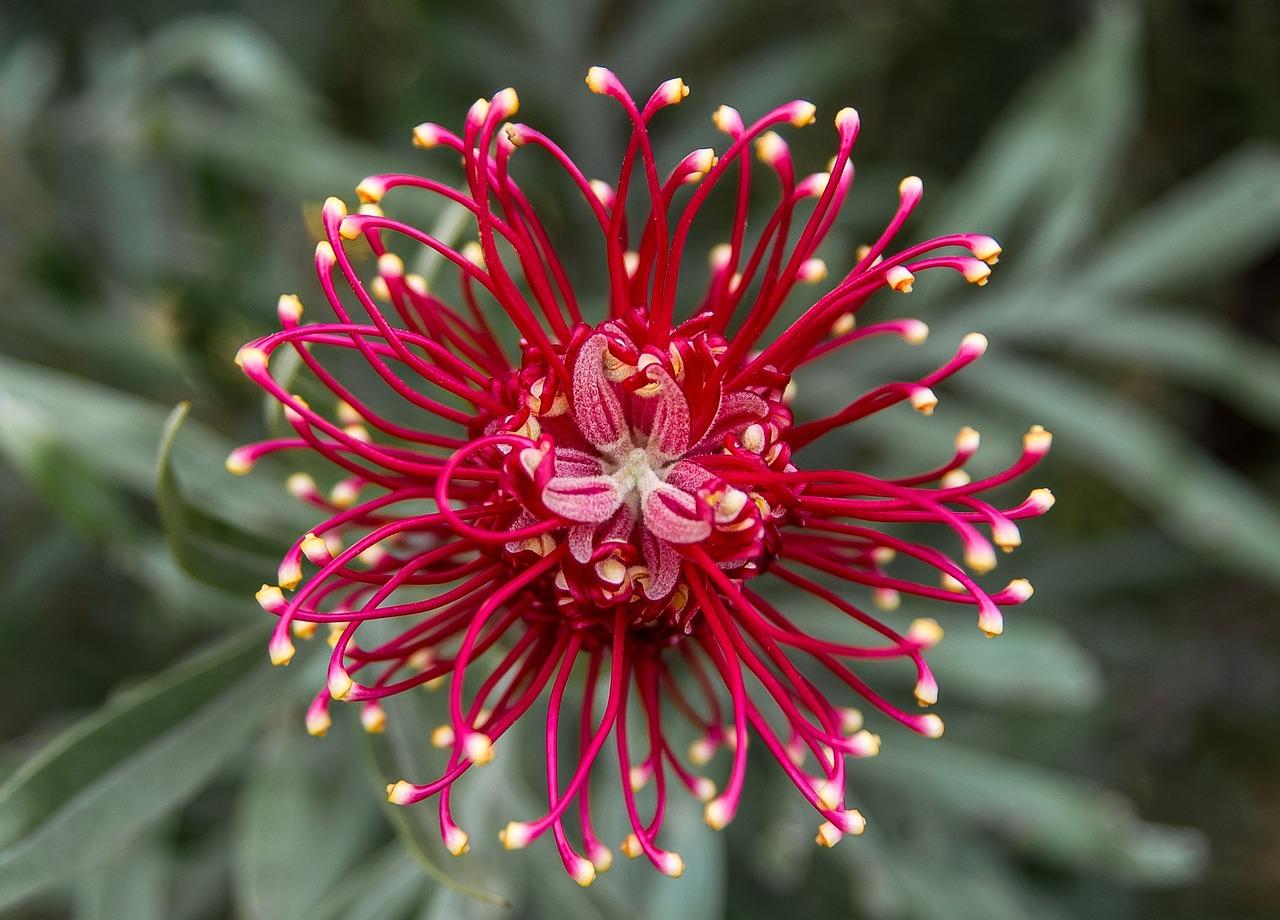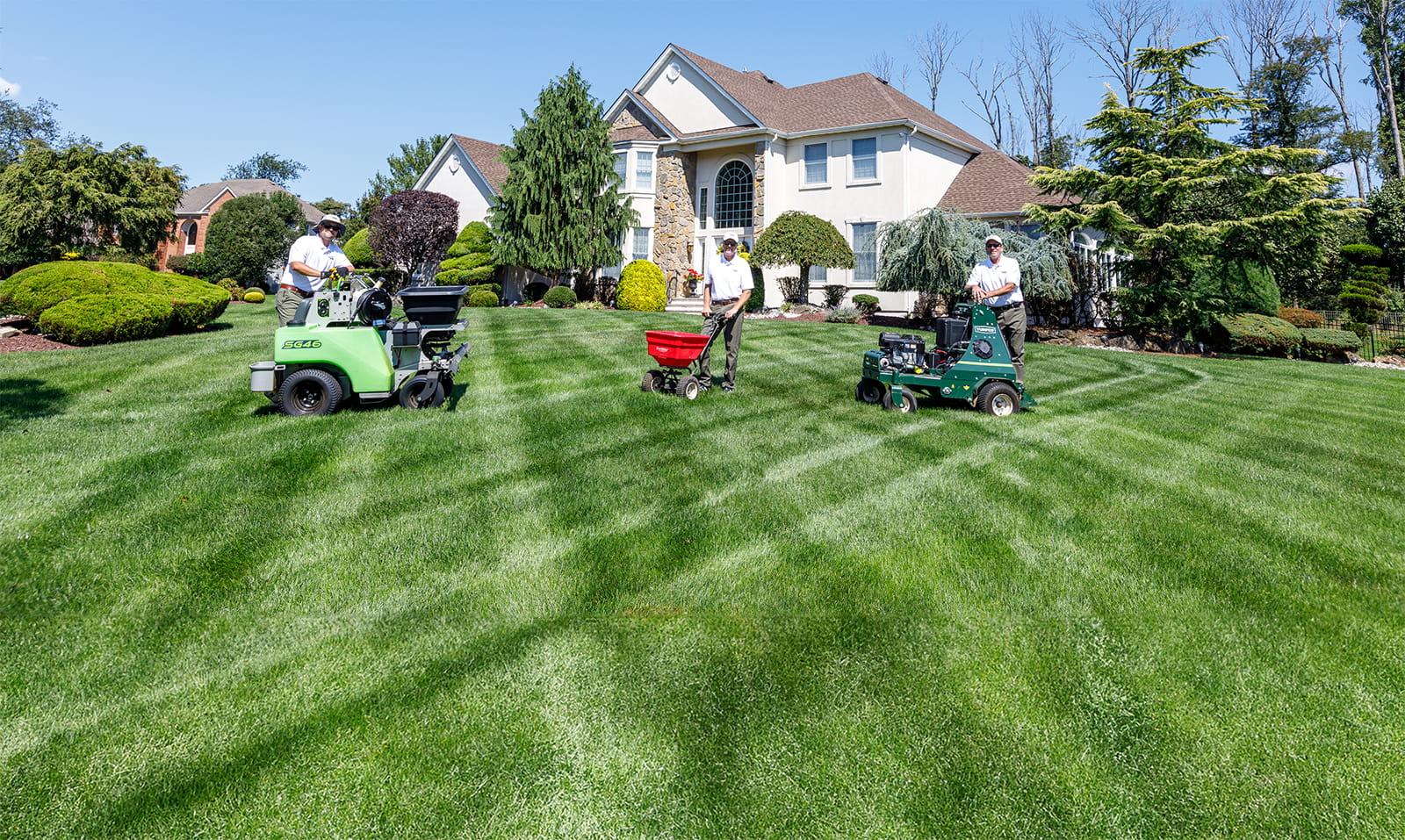As we look ahead to 2025, the world of lawn care is poised on the brink of transformation, blending innovation with sustainability to redefine our outdoor spaces. Gone are the days of traditional mowing and routine fertilization; today’s homeowners are embracing a more holistic approach that prioritizes environmental stewardship and cutting-edge technology. In this article, we will explore nine exciting lawn care trends that promise to revitalize your yard, enhance its beauty, and contribute to the well-being of the planet. From eco-pleasant practices to smart gadgets, these trends are not just fads; they represent a shift towards a greener, more sustainable future for landscaping. Join us as we delve into the future of lawn care design that could leave your yard healthier and more vibrant than ever before.
Lush Landscapes: The Rise of Sustainable Lawn Care Practices
The shift towards sustainable lawn care is not just a trend; it’s becoming a vital practice for eco-conscious homeowners. As people increasingly recognize the importance of preserving natural resources, the methods used to maintain lush, green lawns are evolving. By embracing sustainable techniques, gardeners are not only enhancing the beauty of their yards but also contributing to a healthier planet.
- Organic Fertilizers: Utilizing natural amendments over synthetic options is becoming standard. This approach nourishes the soil while reducing chemical runoff.
- Native Plant Integration: Incorporating indigenous plants into landscaping promotes biodiversity and requires less water and maintenance.
- Water Conservation: Techniques such as rain gardens and drip irrigation systems are gaining popularity, maximizing efficiency while minimizing waste.
Moreover, technology is playing a pivotal role in promoting sustainable practices. Smart lawn care devices, such as automated sprinkler systems with weather sensors, can significantly reduce water usage. Another innovation making waves is the use of cover crops, which not only improve soil quality but also help suppress weeds naturally. The combination of modern tools and eco-friendly methods is paving the way for homeowners to create vibrant, resilient landscapes that thrive in harmony with nature.

Smart Solutions: Integrating Technology for a Smarter Yard
As the world embraces technological advancements, homeowners are leveraging smart solutions to enhance their outdoor spaces. The integration of smart irrigation systems allows for automated watering schedules that adjust based on weather conditions and soil moisture levels, ensuring a lush lawn while conserving water. Additionally,smart sensors can monitor the health of plants,providing real-time data on nutrient levels,light exposure,and temperature,empowering homeowners to make informed decisions about their yard care.
The rise of robotic lawn mowers is another trend that promises to redefine lawn maintenance. These devices navigate your yard effortlessly, using GPS and advanced sensors to optimize mowing patterns, thus reducing labor time and ensuring a manicured look. Homeowners can now enjoy their weekends rather than spending them outdoors with a push mower. With models that can be programmed via smartphone apps, keeping your lawn pristine has never been easier.
| Smart Tech | Benefit |
|---|---|
| Smart Irrigation | Water conservation & optimized scheduling |
| Smart Sensors | Real-time plant health insights |
| Robotic Lawn Mowers | Effortless maintenance & precise mowing |
In addition to these, mobile apps are revolutionizing yard care management. Homeowners can access a plethora of resources such as lawn care calendars, expert gardening tips, and even virtual consultations with landscaping experts. Through these apps,scheduling tasks,tracking plant growth,and analyzing landscape conditions has never been more accessible. Embracing technology in yard maintenance not only enhances the efficiency of garden care but also connects homeowners with the broader gardening community.

Biodiversity in Action: Embracing Native Plants for a Thriving Ecosystem
Incorporating native plants into your landscaping is more than just an aesthetic choice; it’s a powerful strategy for fostering biodiversity. these plants are specifically adapted to your region, requiring less water and maintenance than non-native options. This means that by embracing them, you are not only enhancing the visual appeal of your yard but also contributing to the sustainability of your local ecosystem. Native plants serve as crucial habitats for local wildlife, including pollinators like bees and butterflies that are essential for the health of our habitat.
Moreover, the benefits extend beyond wildlife. Native plants improve soil health and reduce erosion by establishing deep root systems. They have a natural resilience against pests and diseases, minimizing the need for chemical interventions. A well-planned native garden can promote a self-sustaining ecosystem,providing a lush habitat with minimal intervention. Consider the following native plants that are perfect for transforming your yard:
- Eastern Red Columbine: Attracts hummingbirds and thrives in partial shade.
- Black-eyed Susans: Radiant yellow flowers that bloom all summer long.
- Butterfly Milkweed: A top choice for attracting butterflies and providing nectar.
- Prairie Dropseed: An ornamental grass that offers texture and movement.
By selectively choosing native species, you can create a gorgeous, low-maintenance landscape that supports local flora and fauna. The impact of supporting local biodiversity extends far beyond your yard, contributing to the ecological health of your community and ensuring future generations can enjoy a vibrant, thriving ecosystem. Explore the possibilities of native gardening and watch your yard transform into a sanctuary for life.

Customized Care: Personalized Lawn Maintenance Plans for Every Home
As homeowners increasingly seek ways to enhance their outdoor spaces, personalized lawn maintenance plans are emerging as a notable trend. These plans focus on addressing the unique needs of each lawn, taking into account local climate, soil composition, and specific grass types. By analyzing these factors, lawn care professionals can craft tailored strategies that ensure optimal growth and resilience throughout the year.
Key features of customized lawn care approaches include:
- Soil Testing: Regular assessments to determine nutrient levels and pH balances.
- predictive Analytics: Utilizing advanced algorithms to anticipate growth patterns based on environmental factors.
- Season-Specific Treatments: Adjusting care strategies according to seasonal changes, ensuring lawns receive the right care at the right time.
Integrating these personalized plans not only promotes a healthier lawn but also encourages sustainable practices. By utilizing region-specific planting guides and eco-friendly fertilizers, homeowners can cultivate vibrant yards that coexist harmoniously with local ecosystems. The shift towards individual care plans signifies a broader movement towards mindful and responsible lawn management, paving the way for beautiful landscapes that reflect the distinct character of each home.
Q&A
Q&A: 9 Lawn Care Trends for 2025 That Will Transform Your Yard
Q1: What are some key trends shaping the future of lawn care in 2025?
A1: In 2025, lawn care will be heavily influenced by sustainability and technology. Key trends include the rise of eco-friendly landscaping, the use of smart irrigation systems, and the introduction of native plants and drought-resistant grass types. these trends aim to conserve water and support local ecosystems while providing beautiful outdoor spaces.
Q2: How is technology playing a role in lawn care advancements?
A2: Technology is revolutionizing lawn care with innovations such as robotic lawn mowers and smart sensors for soil moisture levels.These devices allow homeowners to maintain their gardens efficiently, minimizing labor and maximizing health. In addition, apps that provide personalized care plans based on local weather conditions are becoming essential tools for lawn enthusiasts.
Q3: Can you explain the importance of sustainable practices in lawn care?
A3: Sustainable practices in lawn care are crucial for conserving natural resources and promoting biodiversity. By focusing on organic fertilizers, natural pest control methods, and permaculture principles, homeowners can reduce their carbon footprint and support the environment. These practices also foster healthier soil, resulting in more resilient and vibrant lawns.
Q4: What role do native plants play in the 2025 lawn care trends?
A4: Native plants are expected to gain popularity in 2025 as they require less water and are more resilient to local pests and diseases. By using native flora, homeowners can create natural habitats for wildlife and drastically reduce the need for chemical interventions. Additionally,native plants add unique beauty and character to gardens,reflecting the local landscape.
Q5: How can homeowners implement smart irrigation systems effectively?
A5: Homeowners can implement smart irrigation systems by installing weather-based sensors that adjust watering schedules according to real-time conditions. Such systems can optimize water usage, preventing overwatering while ensuring the lawn remains healthy and lush. Coupling these systems with drought-tolerant landscaping will further enhance water conservation efforts.Q6: What are the benefits of reducing lawn size or creating multifunctional outdoor spaces?
A6: Reducing lawn size can lead to lower maintenance costs and decreased water usage,while incorporating multifunctional outdoor spaces promotes relaxation and social interaction. By integrating gardens, patios, and play areas, homeowners can create diverse environments that serve various purposes, all while minimizing the traditional lawn footprint.
Q7: How is the use of lawn care services evolving?
A7: Lawn care services are evolving to meet the growing demand for sustainable and technologically advanced solutions. Many companies are now offering organic treatments, custom landscaping, and high-tech maintenance options such as remote monitoring and drone assessments. This transformation allows customers to enjoy professional expertise while supporting eco-friendly practices.
Q8: Are there any emerging grass types that homeowners should know about for 2025?
A8: Yes! Emerging grass types like zoysia and fescue blends are gaining popularity due to their drought resistance and adaptability to varying climates. These grass types require less water and fewer fertilizers, making them ideal for environmentally conscious homeowners looking to maintain lush lawns with lower resource usage.
Q9: How can individuals stay informed about the latest trends in lawn care?
A9: Individuals can stay informed about the latest trends in lawn care by following industry publications, attending local workshops, and connecting with gardening communities online. Social media platforms and dedicated gardening blogs also offer a wealth of information on new technologies, sustainable practices, and innovative designs tailored for the future of lawns.
Concluding remarks
As we stand on the cusp of 2025, the world of lawn care is poised for a transformation that blends innovative technology with sustainable practices. The trends outlined in this article are not just fleeting fads; they represent a shift toward more thoughtful stewardship of our green spaces. By embracing these developments, you can cultivate a lawn that is not only aesthetically pleasing but also environmentally responsible.
Whether it’s utilizing smart irrigation systems, adopting eco-friendly fertilizers, or experimenting with native plant landscapes, each trend offers a unique chance to enhance your yard while contributing positively to the ecosystem. As you embark on this journey, remember that every small change can have a big impact.
So, grab your gardening gloves and be prepared to embrace the future of lawn care! With these insights, your yard can flourish in 2025 and beyond, becoming a true reflection of your commitment to sustainability and beauty in nature. Here’s to transforming your outdoor space into a vibrant oasis that you—and the planet—can enjoy for years to come.
